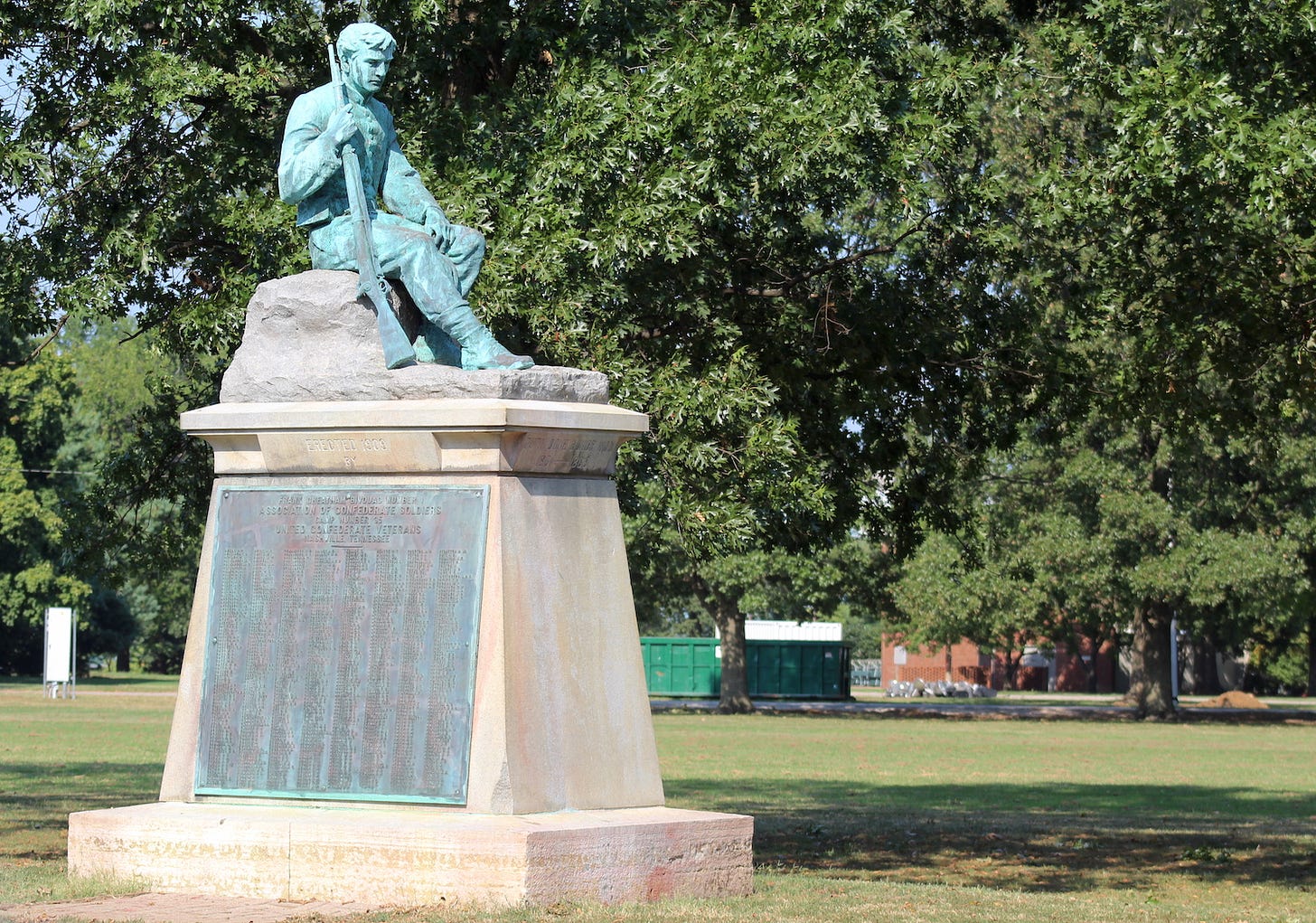Civil War Memory Book Group
A reminder that our first book group meeting will take place on Sunday, March 26 at 7pm. We will discuss Clint Smith’s book How the Word is Passed: A Reckoning with the History of Slavery Across America. This event is open only to paid subscribers. Consider upgrading today to take part in what promises to be a lively and educational discussion.
In the News
Students and staff at the Vermont Law and Graduate School are debating whether a mural depicting the horrors of slavery should be removed.
After envisioning a pair of murals that would describe the horrors of slavery and celebrate Vermont’s abolitionist history, Mr. Kerson said he searched the state for a place with the right set of walls and a mission that would complement his theme. The tiny, progressive law school on the banks of the White River seemed a perfect setting, he said, and its leaders in the early 1990s welcomed the project to the second floor of its student center, an airy, quiet space used for study and meetings.
It did not take long for some students to feel uneasy with the paintings. Soon after she started working at the law school, in 1999, Ms. Jefferson began hearing occasionally from students who were troubled by the murals’ style and content, particularly Black figures that some found cartoonish or reminiscent of earlier racist iconography. Removal of the paintings was discussed in 2013, and again in 2014, when plaques were added to explain the subject matter.
A cache of Lincoln love letters, that turned out to be fakes, appeared in the Atlantic Monthly in 1928.
The magazine showed the letters to experts. Ida Tarbell, a pioneering muckraker turned Lincoln biographer, believed they were real. So did Lincoln biographer Carl Sandburg, who said they “seem entirely authentic.”
With its editors convinced, the Atlantic Monthly in late 1928 began publishing a three-part “Lincoln the Lover” series, written by Minor and based on the letters. Minor would be paid $6,500 — about $113,000 today — for the articles and a planned book.
Skeptics pounced. The handwriting in letters by different people looked similar. An 1834 letter referred to Kansas, which didn’t yet exist. Neither, apparently, did cousin Matilda. And Lincoln didn’t sound like Lincoln. Wouldn’t even a young Abe show some of the remarkable wordsmithing powers that gave us the Gettysburg Address? Instead, he remarked on his “furtherance.”
I’ve never understood the characterization of slavery as a “job” or enslaved people as “workers.” They are two distinct forms of labor and productivity. Here is an example that recently appeared in Jacobin.
Several million slaves walked off their jobs over the course of the Civil War. As in most such disputes between workers and employers, the latter provided most of the documentation; the striking workers left little in the way of sources.
I am going to write something about the role of language in interpreting history later this week.
A Confederate monument in one of Nashville’s most popular public parks will remain.
The Metro Board of Parks and Recreation, the commission determined, failed to meet the burden of showing there was a need to move the bronze statue “based on historical or other compelling public interest.”
Ibram X. Kendi interviews education historians Jarvis R. Givens about the 1925 decision to ban Carter G. Woodson’s history textbook in Muskogee, Oklahoma.
In 1925, teachers at the Negro Manual and Training High School of Muskogee, Oklahoma, made what they thought was an appropriate choice of textbook: The Negro in Our History, by the Harvard-trained Black historian Carter G. Woodson. Woodson had written this "history of the United States as it has been influenced by the presence of the Negro" to supply the "need of schools long since desiring such a work," as he wrote in the book's preface. Upon learning of this textbook choice, White segregationists on the school board sprang immediately into action. They decreed that no book could be “instilled in the schools that is either klan or antiklan,” insinuating that Woodson’s Black history textbook was “antiklan."
Videos
Here is some incredible footage of a Civil War Centennial march in Jackson, Mississippi in 1961.
I am going to be interviewing Garry Adelman at the end of the month. Here is a little taste of what he does so well.
New to the Civil War Memory Library
Elizabeth Brown Boyd, Southern Beauty: Race, Ritual, and Memory in the Modern South (The University of Georgia Press, 2022).
Dean Calbreath, The Sergeant: The Incredible Life of Nicholas Said: Son of an African General, Slave of the Ottomans, Free Man Under the Tsars, Hero of the Union Army (Pegasus Books, 2023).
Frances M. Clarke and Rebecca Jo Plant, Of Age: Boy Soldiers and Military Power in the Civil War Era (Oxford University Press, 2023).
Otis
Here is a recent pic of Otis on Valentine’s Day. No, this is not our house. :-)







I just finished American Inheritance: Liberty and Slavery in the Birth of a Nation, 1765-1795 by Edward Larson which was very interesting. You can see the origins of the Civil War play out at the nations founding. Has this been discussed here?
I'm so excited that I'm going to actually READ the book. LOL!! I'm looking forward to this gathering,